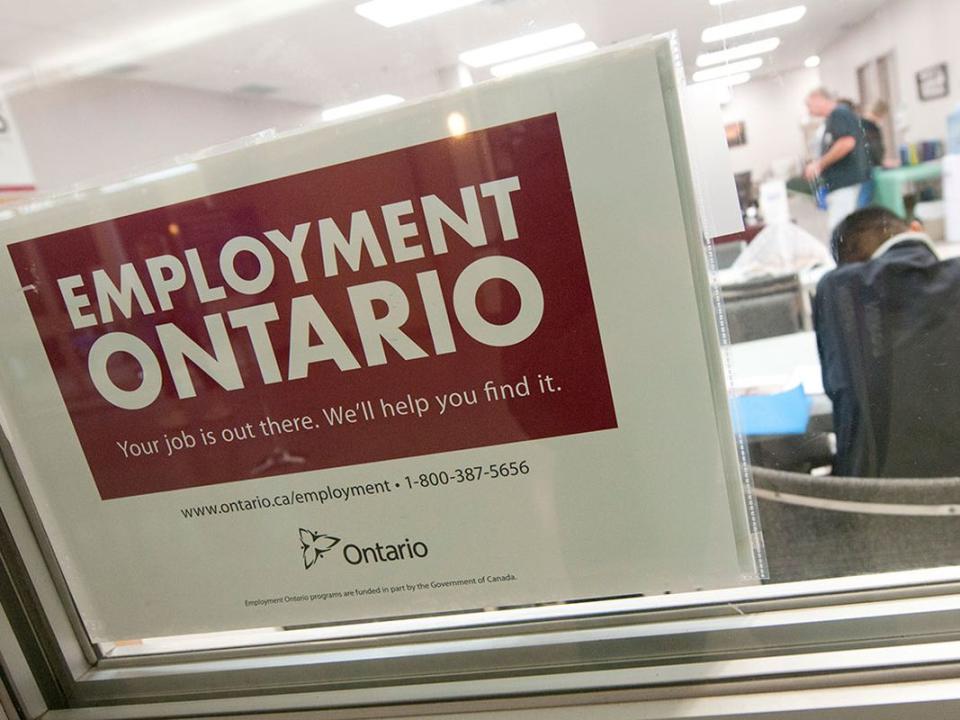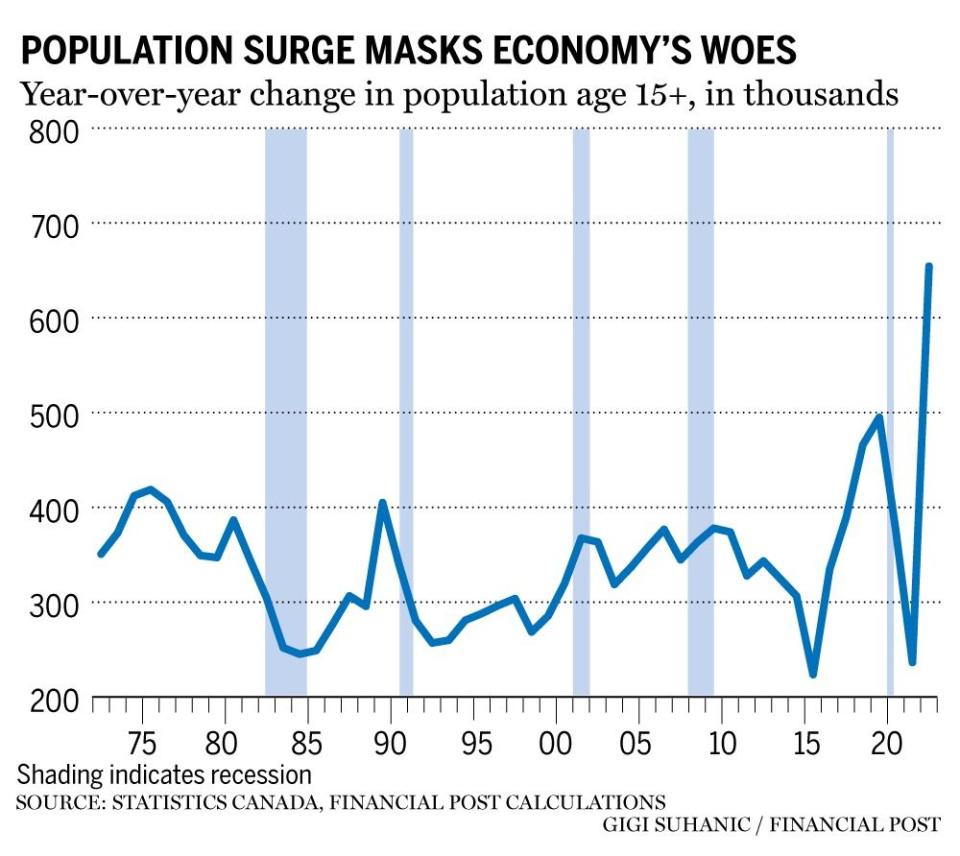David Rosenberg: Woe Canada — latest job numbers are a mirage, not a miracle

The currency traders bid up the Canadian dollar on May 5 in the wake of the apparent glow from the April jobs data, but it seems clear to me that they didn’t take the time to view the entire report and its implications, which were none too bullish.
First, all of April’s gain in jobs was in part-time jobs. Full-time positions fell 6,200 last month and have only accounted for 45 per cent of the total employment growth in the February-April period. This is one reason why the hours-worked data cannot be trusted. On top of that, the jobs are being concentrated in low value-add services. Employment in the goods-producing sector has plunged 17,100 over the three months to April.
The service sector may be attracting the youth and older cohorts back into the workforce, but the reality is that the prime working-age segment of the economy has gone AWOL — very little growth in April, and over the past three months, it has accounted for less than 20 per cent of the overall employment advance. This is key because it is the 25-54-year age group that drives the bulk of the spending in the economy.
The third item is how the population surge in this country is masking a whole lot of things going on. For one, what appears to be a jobs boom is not one at all. Why? Because in the past three months, the pace of job creation has lagged well behind Canada’s rampant immigrant-fuelled population bulge.

For example, Canada created 21,800 net new jobs in February, but the population expanded by a far greater 60,100 — a triple. In March, the alleged jobs miracle saw employment rise a hefty 34,700, but, again, this lagged the 80,800 boost in population. Then in April, we saw 41,400 in terms of jobs expansion and, yet again, the population soared 72,000.
The headline unemployment rate looks tight at five per cent, but it is actually less than meets the eye because the employment-to-population ratio, at 62.4 per cent, is right where it was in June 2019 when the jobless rate was sitting at 5.6 per cent; or try the same employment rate in July 2003 when the same headline jobless rate was 7.7 per cent.
The jobs data also masks the structural decay in Canadian productivity. This jobs boom is not being matched by growth in national output or income, and it is the per-capita, macro-economic variables in real terms that best characterize the well-being and prosperity of any country.
The dark side of having employment expand so far beyond production growth is that labour productivity (negative 0.7 per cent on a year-over-year basis) has declined year over year for eight quarters in a row. The level of productivity itself has practically stagnated now for six years.
This is the legacy of this current government in Ottawa, which has done next to nothing from a fiscal policy standpoint to promote the growth in the private-sector capital stock. This is the legacy of the economic policymakers in the nation’s capital. Boasting about job creation (that lags population growth and growth in the overall economy) and a five-per-cent unemployment rate (at a time when the employment-to-population ratio is no higher today than it was two decades ago) is pure camouflage.
Canada is on the verge of following Japan in having its annual death count exceed births for the first time. The data show the immigration boom is more than filling the gap, but creating unprecedented population growth. The folks coming into the country who are between the ages of 25 and 44 are fast approaching 300,000 in number, which is adding nearly three per cent annually to this cohort’s population base of a bit more than 10 million.
Why this is so important is because this age group forms itself into a housing unit immediately, and whether it is rental or homeowner accommodation, the stresses on supply are overwhelming and have driven both rents and house prices to unhealthy and unaffordable levels for the locals. It is reported that many immigrant families are doubling up, which is how they can afford to buy or rent in one of the most expensive real estate markets in the world — and I am talking principally about the Greater Toronto Area, which remains in an affordability crisis.
We have now reached a point where the growth in population, at two per cent, is running faster than the annual 1.5 per cent increase in the nation’s housing stock. Home affordability nationwide is over 40 per cent more stretched than the prior historical average as well, and that is with interest rates still far below where they have traditionally been. There remains this bubble in home prices and in residential rents that desperately needs to be resolved.
It is fanciful to believe this can be accomplished on the supply side given we are running out of construction workers, with employment in this sector already surging 30 per cent since 2010 and almost doubling the pace of job creation in the rest of the economy. The jobless rate for construction workers is down to 5.3 per cent, half of what it was in 2010; the actual number of construction workers currently idle, at 89,400, is more than 25 per cent below the average of the past three decades.
Ottawa needs to start managing this immigration file with an eye towards ensuring that Canada has the resources to accommodate the demand without generating these massive imbalances.
David Rosenberg is founder of independent research firm Rosenberg Research & Associates Inc. To receive more of David Rosenberg’s insights and analysis, you can sign up for a complimentary, one-month trial on the Rosenberg Research website.

 Yahoo Finance
Yahoo Finance 